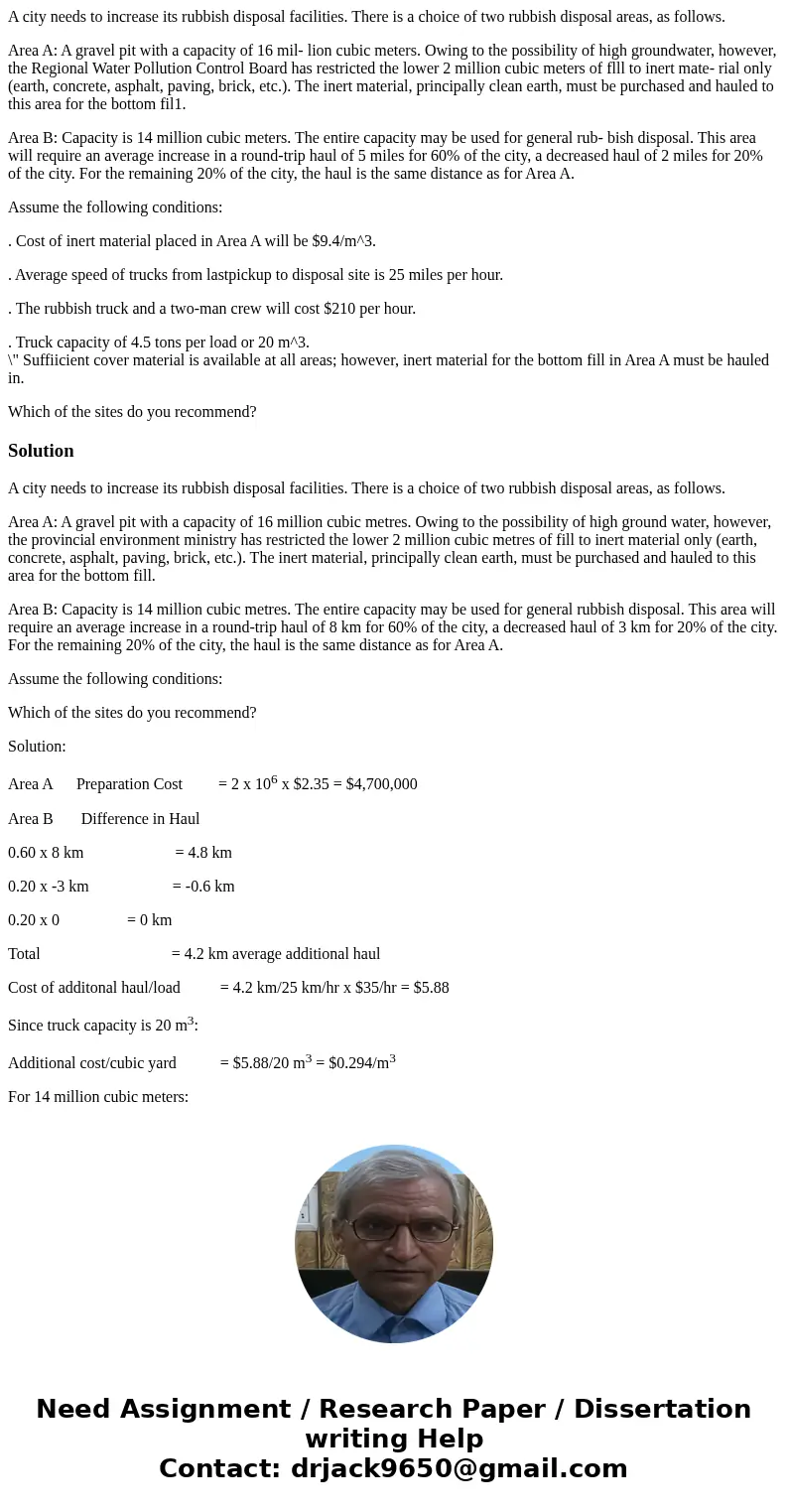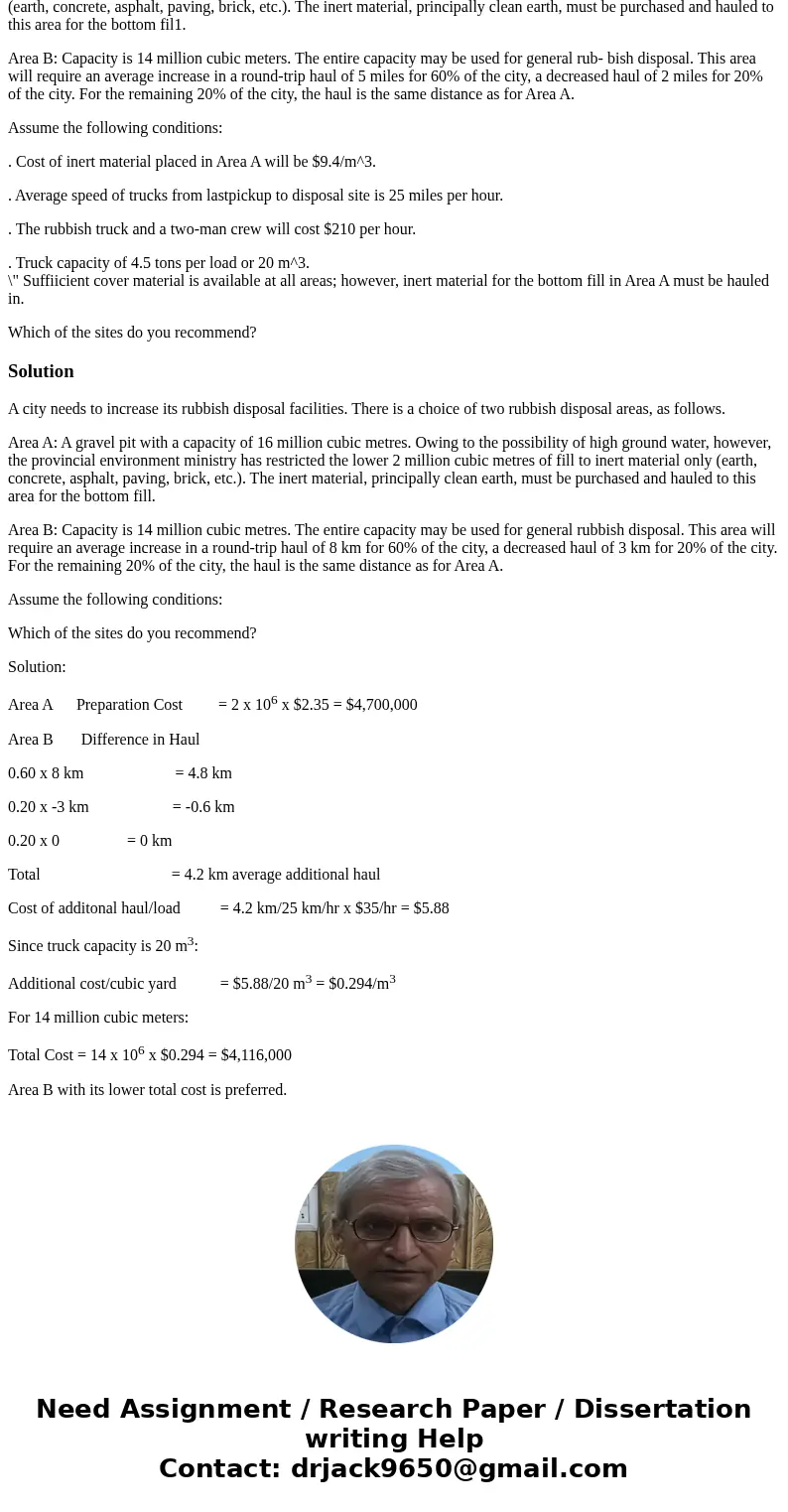A city needs to increase its rubbish disposal facilities The
A city needs to increase its rubbish disposal facilities. There is a choice of two rubbish disposal areas, as follows.
Area A: A gravel pit with a capacity of 16 mil- lion cubic meters. Owing to the possibility of high groundwater, however, the Regional Water Pollution Control Board has restricted the lower 2 million cubic meters of flll to inert mate- rial only (earth, concrete, asphalt, paving, brick, etc.). The inert material, principally clean earth, must be purchased and hauled to this area for the bottom fil1.
Area B: Capacity is 14 million cubic meters. The entire capacity may be used for general rub- bish disposal. This area will require an average increase in a round-trip haul of 5 miles for 60% of the city, a decreased haul of 2 miles for 20% of the city. For the remaining 20% of the city, the haul is the same distance as for Area A.
Assume the following conditions:
. Cost of inert material placed in Area A will be $9.4/m^3.
. Average speed of trucks from lastpickup to disposal site is 25 miles per hour.
. The rubbish truck and a two-man crew will cost $210 per hour.
. Truck capacity of 4.5 tons per load or 20 m^3.
\" Suffiicient cover material is available at all areas; however, inert material for the bottom fill in Area A must be hauled in.
Which of the sites do you recommend?
Solution
A city needs to increase its rubbish disposal facilities. There is a choice of two rubbish disposal areas, as follows.
Area A: A gravel pit with a capacity of 16 million cubic metres. Owing to the possibility of high ground water, however, the provincial environment ministry has restricted the lower 2 million cubic metres of fill to inert material only (earth, concrete, asphalt, paving, brick, etc.). The inert material, principally clean earth, must be purchased and hauled to this area for the bottom fill.
Area B: Capacity is 14 million cubic metres. The entire capacity may be used for general rubbish disposal. This area will require an average increase in a round-trip haul of 8 km for 60% of the city, a decreased haul of 3 km for 20% of the city. For the remaining 20% of the city, the haul is the same distance as for Area A.
Assume the following conditions:
Which of the sites do you recommend?
Solution:
Area A Preparation Cost = 2 x 106 x $2.35 = $4,700,000
Area B Difference in Haul
0.60 x 8 km = 4.8 km
0.20 x -3 km = -0.6 km
0.20 x 0 = 0 km
Total = 4.2 km average additional haul
Cost of additonal haul/load = 4.2 km/25 km/hr x $35/hr = $5.88
Since truck capacity is 20 m3:
Additional cost/cubic yard = $5.88/20 m3 = $0.294/m3
For 14 million cubic meters:
Total Cost = 14 x 106 x $0.294 = $4,116,000
Area B with its lower total cost is preferred.


 Homework Sourse
Homework Sourse